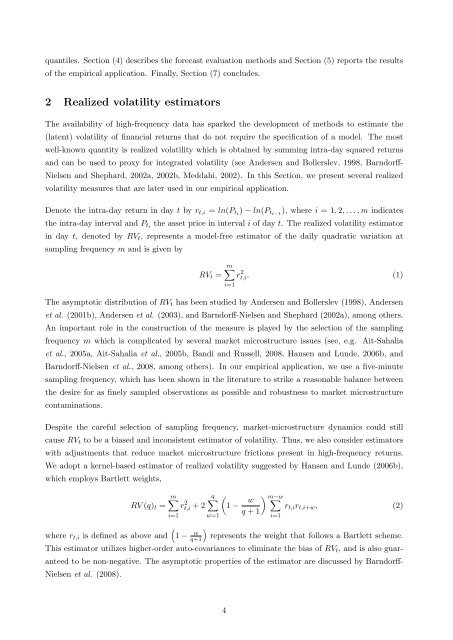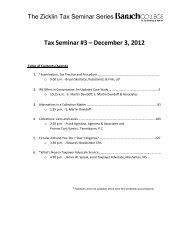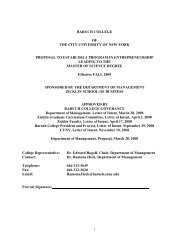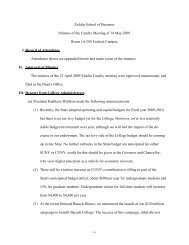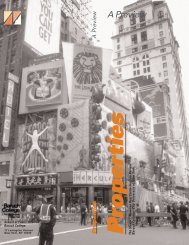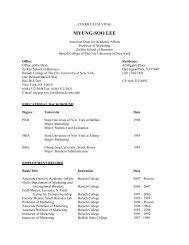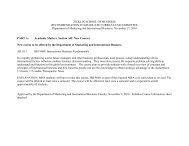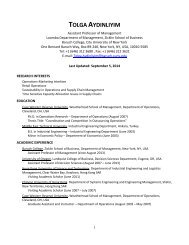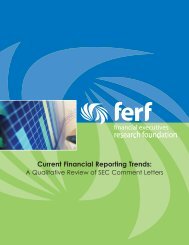Valueat-Risk
Forecasting the Return Distribution Using High-Frequency Volatility ...
Forecasting the Return Distribution Using High-Frequency Volatility ...
- No tags were found...
Create successful ePaper yourself
Turn your PDF publications into a flip-book with our unique Google optimized e-Paper software.
quantiles. Section (4) describes the forecast evaluation methods and Section (5) reports the results<br />
of the empirical application. Finally, Section (7) concludes.<br />
2 Realized volatility estimators<br />
The availability of high-frequency data has sparked the development of methods to estimate the<br />
(latent) volatility of financial returns that do not require the specification of a model. The most<br />
well-known quantity is realized volatility which is obtained by summing intra-day squared returns<br />
and can be used to proxy for integrated volatility (see Andersen and Bollerslev, 1998, Barndorff-<br />
Nielsen and Shephard, 2002a, 2002b, Meddahi, 2002). In this Section, we present several realized<br />
volatility measures that are later used in our empirical application.<br />
Denote the intra-day return in day t by r t,i = ln(P ti ) − ln(P ti−1 ), where i = 1, 2, . . . , m indicates<br />
the intra-day interval and P ti the asset price in interval i of day t. The realized volatility estimator<br />
in day t, denoted by RV t , represents a model-free estimator of the daily quadratic variation at<br />
sampling frequency m and is given by<br />
m∑<br />
RV t = rt,i. 2 (1)<br />
i=1<br />
The asymptotic distribution of RV t has been studied by Andersen and Bollerslev (1998), Andersen<br />
et al. (2001b), Andersen et al. (2003), and Barndorff-Nielsen and Shephard (2002a), among others.<br />
An important role in the construction of the measure is played by the selection of the sampling<br />
frequency m which is complicated by several market microstructure issues (see, e.g. Ait-Sahalia<br />
et al., 2005a, Ait-Sahalia et al., 2005b, Bandi and Russell, 2008, Hansen and Lunde, 2006b, and<br />
Barndorff-Nielsen et al., 2008, among others). In our empirical application, we use a five-minute<br />
sampling frequency, which has been shown in the literature to strike a reasonable balance between<br />
the desire for as finely sampled observations as possible and robustness to market microstructure<br />
contaminations.<br />
Despite the careful selection of sampling frequency, market-microstructure dynamics could still<br />
cause RV t to be a biased and inconsistent estimator of volatility. Thus, we also consider estimators<br />
with adjustments that reduce market microstructure frictions present in high-frequency returns.<br />
We adopt a kernel-based estimator of realized volatility suggested by Hansen and Lunde (2006b),<br />
which employs Bartlett weights,<br />
m∑<br />
q∑<br />
(<br />
RV (q) t = rt,i 2 + 2 1 − w ) m−w ∑<br />
r t,i r t,i+w , (2)<br />
q + 1<br />
i=1 w=1<br />
i=1<br />
( )<br />
where r t,i is defined as above and 1 − w<br />
q+1<br />
represents the weight that follows a Bartlett scheme.<br />
This estimator utilizes higher-order auto-covariances to eliminate the bias of RV t , and is also guaranteed<br />
to be non-negative. The asymptotic properties of the estimator are discussed by Barndorff-<br />
Nielsen et al. (2008).<br />
4


